Madagascar for Kids
Podcast: Play in new window | Download
Welcome to Madagascar For Kids with Karyn from CASE OF ADVENTURE!
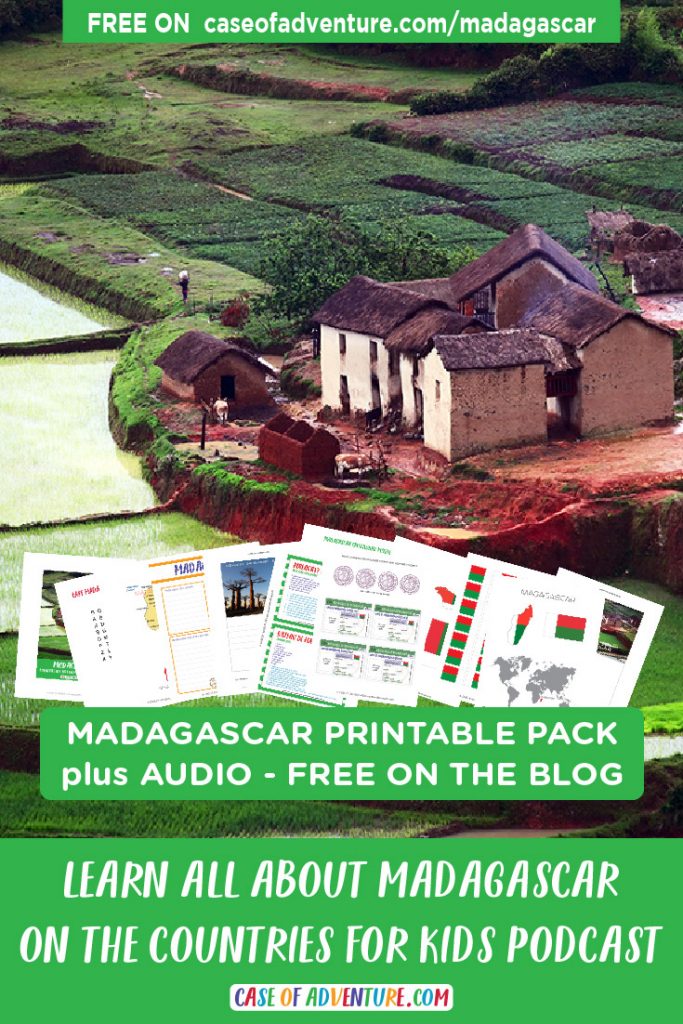
Madagascar for Kids
Today we are going to be talking about Madagascar.
Madagascar is a BIG island off the coast of Africa – it’s the fourth largest island in the world. It’s even bigger than Great Britain and almost as big as the state of Texas.
It’s home to thousands of animal species, such as the well-known lemur. Many species are not found anywhere else in the world like the fossa, the tomato frog, the sifaka (pronounced shifark) and the indri which are also part of the lemur family.
In Madagascar you will find lush rainforests, beaches and coral reefs, mountainous areas, irrigated rice fields and extinct volcanoes. The “Avenue of the Baobabs,” is a dirt road lined with massive old, old trees called baobab trees. Some of the trees are 800 years old!
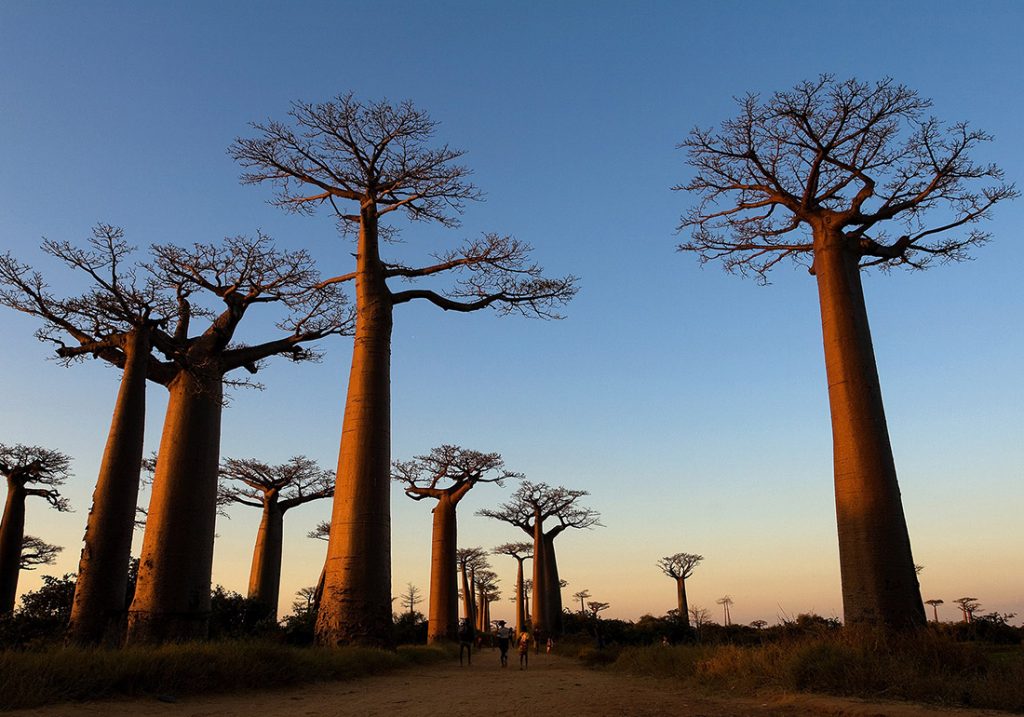
It was the famous explorer, Marco Polo who first called the island Madagascar – by accident actually. He thought he had visited the Somali port of Mogadishu and got the name wrong – he wrote Madageiscar in his memoirs – and so the Island became Madagascar.
Madagascar has gone by many names. When it became a free country in 1958 it became the Malagasy Republic, then in 1975, its people renamed it the Democratic Republic of Madagascar and then in 1993, it changed its name to the Republic of Madagascar.
The busy capital of Madagascar is Antananarivo. Some people use its French colonial name Tana but Antananarivo is it’s real name.
The president of Madagascar has the longest surname of any president anywhere in the world. His name is Hery Rajaonarimampianina, (AIR-ee rah-zhow-nah-ree-mahm-pee-AHN)
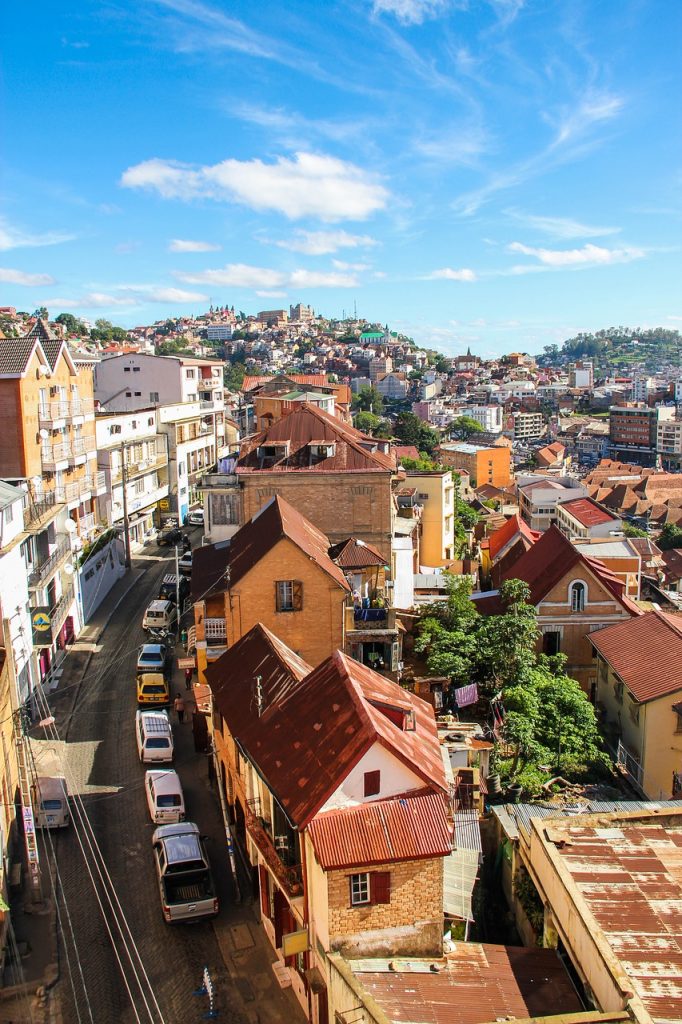
THE LANGUAGE
Madagascar has two official languages, Malagasy and French.
The Malagasy Language doesn’t exist anywhere else in the world. There are lots of different versions of the language – or what we call dialects so it can be a bit confusing if you are trying to learn the language.
hello is Manao ahoana (manna horna)
goodbye is veloma (filorma)
yes is eny (yeny)
no – tsia
My name is Karyn. No anarako dia (nuw anara ku dia) Karyn.
Now you try with your name in there!
THE FLAG AND THE CURRENCY
The flag of Madagascar has two stripes going across – red on top and green below. Then there is a white stripe which goes down the left of the flag.
The flag used to be just red and white. Soon after WWII, Madagascan people fought a war to try to become independent from France but they were defeated. It was only about ten years later that France allowed them to start to become independent and their flag was chosen.
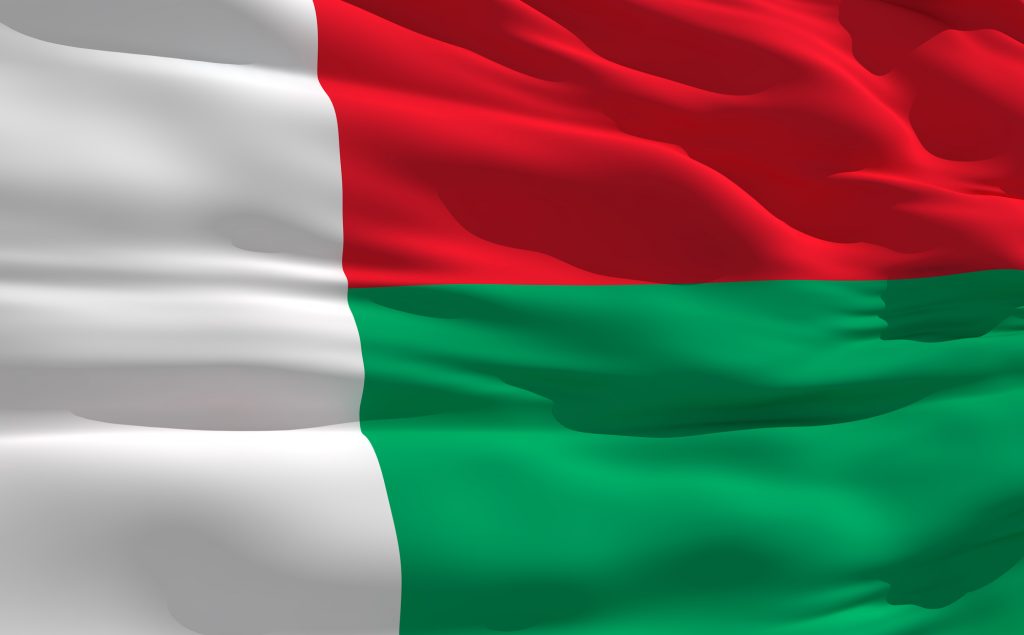
The white is said to stand for purity and the red for sovereignty; the green represents the coastal regions and symbolizes hope.
Madagascar has its own independence day to celebrate when they officially became independent from France’s rule over them. Their independence day is the 26th June. They celebrate with music and dancing and fireworks! There are no laws against fireworks in Madagascar – so they go wild. It’s a little scary!
You can listen to the Madagascan national anthem on Wikipedia here.
The currency that the people of Madagascar use is called the ariary (uh-ri-harry). For 1 US dollar you could buy almost 3000 madagascan ariary , for 1 British pound you could get about 4000 ariary and for 1 South African rand about 220 ariary.
Now I’m going to tell you about a queen from long ago in Madagascar.
During the 1800s, Queen Ranavalona wanted to preserve Madagascar’s traditional beliefs and she decided to send lots of missionaries who had come to share the gospel, back home to their own countries. Many Christians were persecuted, and some were even put to death.
When this queen died, Queen Ranavalona II said that Madagascar would be a Christian country. These days there are catholic church and protestant ones and many missionaries have been able to return to Madagascar to tell people about Jesus because calling it a Christian country doesn’t mean all its people know about Him.
There is a link to a video by a missionary to Madagascar below.
INTERESTING FACTS ABOUT MADAGASCAR
There is a beautiful and valuable blue gemstone that I’m sure you’ve hear of that you find a lot of in Madagascar. That is the sapphire. Blue is the most common color, but you actually also get pink, yellow, green, white and a very funny color called padparadscha which is a creamy pink. Wouldn’t you love to dig and find some of those gems in your garden!
Now, much of the vanilla used all over the world comes from Madagascar. The Coca-Cola Company was a major buyer of vanilla from Madagascar. In 1985 Coca-Cola introduced the New Coke formula which involved using a synthetic flavor, instead of real vanilla and suddenly Madagascar were selling a lot less of their vanilla and they became even poorer. So it turned out to be a good thing, that many people who liked to drink coca-cola, didn’t like the new flavor and so Coca-Cola switched back to using real vanilla and Madagascar’s started to make more money again and their economy grew again.
ANIMALS OF MADAGASCAR
There are a huge amount of animals found in Madagascar and most of them you won’t find anywhere else on Earth.
There are no poisonous snakes at all in Madagascar – Isn’t that wonderful!
I’m sure you’ve heard of the ring-tailed lemur. There are so many different kinds of lemurs in Madagascar.
Quite a few of the animals are on the endangered list. The silky Sifaka, a lemur, which is one of the rarest mammals on earth. Its name means angel of the forest” and refers to its white fur.

The rare Ploughshare tortoise is also endangered.
Then there is the Aye-aye which has the ears of a bat and the teeth of a rat. It also has really long middle fingers which it uses to dig out bugs from underneath the bark of trees – because it like to eat bugs!
The flat-tailed gecko looks just like a dried brown leaf and can easily camouflage itself in a tree. There are tenrecs, chameleons and pochards.
Fossas can climb down trees backwards. Their main food is lemurs! They are very agile climbers and efficient hunters – they are ambush predators.
Download the printable pack including the Madagascar animal cards to learn more about these wonderful creatures.
THE MARKETS AND CULTURE
In Madagascar there are many open air markets where people sell all the goods they have made. People spread out blankets and then spread all their wares on it. Sometimes wares are displayed up and down winding staircases and in alleyways in every available space! To buy something at one of these markets you need to learn how to bargain! This might feel awkward at first, but it is perfectly normal to act unhappy and disgusted when someone offers you a price for something. This is the signal to the seller that the bargaining can begin. Don’t accept that first deal! When most Malagasy realize you’re a foreigner, they’ll assume you are wealthy and give you a price that is three times what it needs to be. Always negotiate.
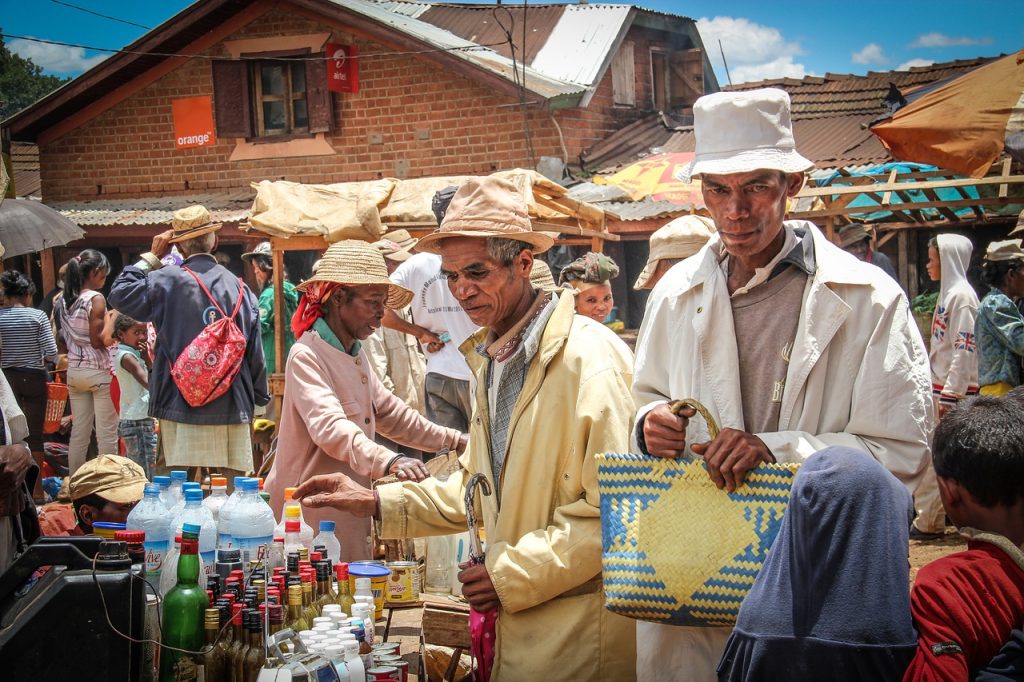
The Malagasy people sell many handmade things including wallets made from alligator skin and wooden musical instruments. Binding books is also very cheap- they can be bound in alligator skin.
Men like to wear the Vongu vongu which is a traditional silver bracelet which is often given to them by their ancestors and passed down from generation to generation.
Would you like to try the Malagasy handshake? Hold out your hand to shake, but before you shake, grab your forearm with your other hand and bow slightly while you shake.
In rural areas, the people wear traditional dress. For men, this would be a large shirt and shorts or long pants, while women may wear dresses with gathered skirts or wrapped skirts with a top and a rectangular shawl, known as alamba. People of the middle class wear Western clothes like you and me, with blue jeans being a favorite among the young.
An unusual thing that they do, is once every few years, they go to their ancestors grave, remove the bones and have a party with them before returning the bones to the grave. the festivities of famadihana are a way to shower love and affection upon their ancestors.
WHAT FOOD DO THEY EAT?
Rice is their main food. They eat lots of rice,
They eat it in giant portions – it’s the base of all almost their dishes.
In fact, the word “to eat” in Malagasy is “mihinam-bary”, which means “to eat rice.”
So they would start with a BIG bowl of rice and then add a bit of meat like chicken or beans and a bowl of broth. When eating rice, you would use a spoon to lift the rice to your mouth and a fork to help scoop the rice onto your spoon.
Some Malagasy claim they don’t sleep properly if they haven’t had rice in the day.
Madagascar has one of the highest rates of stunted growth in children. That means that the children don’t grow properly because their meals rely too much on rice and they don’t have enough meat or vegetables, so they don’t have the nutrients they need to grow properly.
While poor people eat mostly rice, richer people have a bit more variety
In Madagascar, a traditional meal is typically eaten on the floor. Food items are generally served on a single plate and eaten with a spoon. Meals are served when they are steaming hot. No drinks accompany the meal, nor do any type of starters or appetizers. The traditional meal is made up of three of four dishes, followed by a dessert of some kind, usually made from local fruits and vanilla.
If you eat out at a Madagascan person’s house, you should make sure to finish your food, but don’t eat too fast. The people have a saying “ Wise will pretend to be full but the foolish will just stuff their faces”. You should eat same speed as host and when they are done, you are done. If you eat too quickly and guzzle your food, they will bring you more but it might be their food from the next day.
Fruits like jackfruit, longan, avocado, custard apple, breadfruit, and baobab all grow in Madagascar. Madagascar has a yummy snack called Koba. This is made of rice, peanut and banana, mixed and turned into a pâté.
Malagasy Romazava is the national dish of Madagascar. It is a meat stew filled with a combination of green leafy vegetables. It is served over rice.
Street food is mostly deep fried. They enjoy fried potato cakes like potato mash with ground beef or deep fried bananas or bell peppers. The street vendors also sell cold potato or pasta salad.
If you are going to eat cold salad with mayonnaise in it from a street vendor, you should do so early in the morning because their mayonnaise is egg based and the food you buy is not refrigerated, So it can go off quickly.
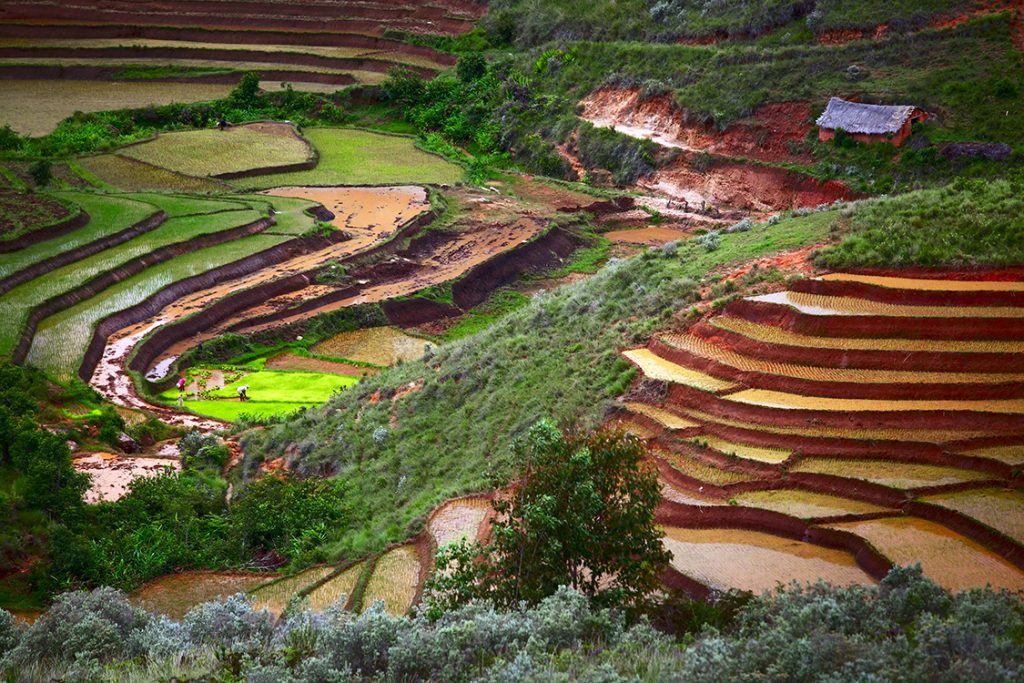
WHAT INTERESTING PLACES COULD I VISIT?
Madagascar has the third largest coral reef in the world, the Toliara coral reef.
There is also an entire forest made of stones. Madagascar’s Stone Forest, Tsingy, has big, tall stones naturally lined up with trees.
The Ranomafana National Park has many beautiful streams splashing through densely forested hills. The park is home to the endangered golden bamboo lemur, an animal whose diet includes bamboo shoots that contain doses of cyanide, a poison that would be lethal to other animals, yet the charming golden lemur feeds on the bamboo with no problem at all.
The Royal Hill of Ambohimanga is a historical and sacred village that was once home to Madagascan royalty – so there are palaces and filled with King’s possesions, drums and weapons.
At the Ile Sainte Marie, an island off the east coast of Madagascar, the protected bays and inlets drew pirates there during the 17th and 18th centuries, and the wrecks of several pirate ships can still be viewed in the shallow waters.
Deep sea diving is a fun thing to do in Madagascar and you are able to see humpback whales in many places throughout the year.
WHAT ARE THE HOMES LIKE?
Most people live in very poor conditions without running water. Richer people live in houses made of stone and cement but there are still no carpets and the houses are not very big, but they do have running water.
Often people travel in what they call a taxi-brousse – use 25 person minibus where they cram 50 people in it- some times the tires will blow out because its too heavy.
Carts pulled by oxen are used to transport things to market and the pousse- pousse (“POOSS-POOSS,” meaning “push-push”), a cart for passengers or goods, pulled by one man. Sometimes on a ten hour hour bus ride out to a province, travelers will go by pousse pousse . 2 people and their luggage!
Many people ride bicycles or walk to get around. There is a traffic law that you have to have a buzzer on it or your will get into trouble
A man passed a police check point on his bicycle and when he didn’t have his papers on him, he had to give the guard all his money so that they wouldn’t put him in jail.

WHAT IS THE WEATHER LIKE?
Madagascar has only two seasons, a hot wet season and a cold dry season.
There are extreme storms and occasional cyclones.
Its either dry cool and windy or warm and thundery. In the summer, you always need to have rainwear available.
A LITTLE STORY FROM A HEALTH WORKER IN MADAGASCAR
The sun was directly overhead when I reached my neighbor Vola’s home.
She stepped out of her kitchen, wiping her hands with a towel. “You are just in time — the rice is cooked!”
I unbuckled my bicycle helmet and perched it on the handlebars. Before I could accept a plate and”mihinam-bary”— literally “to eat rice” in Malagasy, to have a meal — Vola held up a pitcher of water. “Don’t you want to wash your hands first?” I snuck a glimpse at my palms. To be sure, they were sweaty and covered in dust after biking from the health clinic. I gratefully accepted the water and a bar of soap.
Parents and children alike in my village wash their hands regularly. When I led cooking classes, everyone would wash their hands before touching the food and again before they ate. Gardening lessons were the same: we finished every afternoon of digging in the dirt with soap and a bucket of clean water. I reminded my friends and neighbors to wash their hands regularly, especially before touching their children or after using the latrine. By incorporating handwashing with soap into other activities, we made it a part of our routines. We made it a habit. Many children die worldwide from diarrhea related illnesses which are often transmitted because hands are not properly washed or not washed at all.
Let’s make handwashing a habit — and remember to keep it that way.
LET’S WRAP UP, THEN
Madagascar is the fourth poorest country in the world but also one of the safest countries to live in in Africa thanks to the unique Malagasy culture.
I have to say that while most cultures from around the world are unique, the Malagasy people take it to a whole new level. You can see the diversity on their faces and they are some of the nicest and welcoming people you will meet. Always extremely curious and willing to talk to you – that is if you speak Malagasy or French.
Don’t forget to download the Madagascar printable pack.
And of course, watch the wonderful Madagascar movie with your family!
We hope you enjoyed this Madagascar for Kids podcast! We’ll be back soon with the next episode of Countries for kids from CASE OF ADVENTURE.
Bye, for now!
Countries for Kids from CASE OF ADVENTURE!
COUNTRY-THEMED UNITS FOR HOMESCHOOLERS – ages 7 to 11
Unique and exciting COUNTRY Studies!
EACH UNIT CONSISTS OF:
A Travel Mystery Novel to read
And a Beautiful Adventure Book filled with pages of learning, and tons of activities to work through
The Novel and Adventure Book work together to teach your kids about each country.
In the novel, your kids will experience the country through the eyes of the Grey family as they go exploring, see the sights, sample the cuisine, learn about the culture, and solve a mystery along the way, while completing the Discovery Agent missions at the end of each chapter!
In the Adventure Book your Kids will learn about the landmarks, the flag and national anthem, the capital city, languages, currency and weather of the country. They’ll study maps, learn some local expressions and jokes. They’ll solve clue cards using secret codes and complete many fun activities.
The instructions pages at the back of each Adventure book take you through what to do each day of the Unit.
READ THE STORY – COMPLETE THE MISSIONS – EXPERIENCE THE CULTURE
STUDY THE COUNTRY – CREATE THE MINIBOOKS – DO THE ACTIVITIES – SOLVE THE CLUES
Your kids will embark on a thrilling adventure in a foreign land, and have a ton of fun learning about another country in a way they’ll never forget!

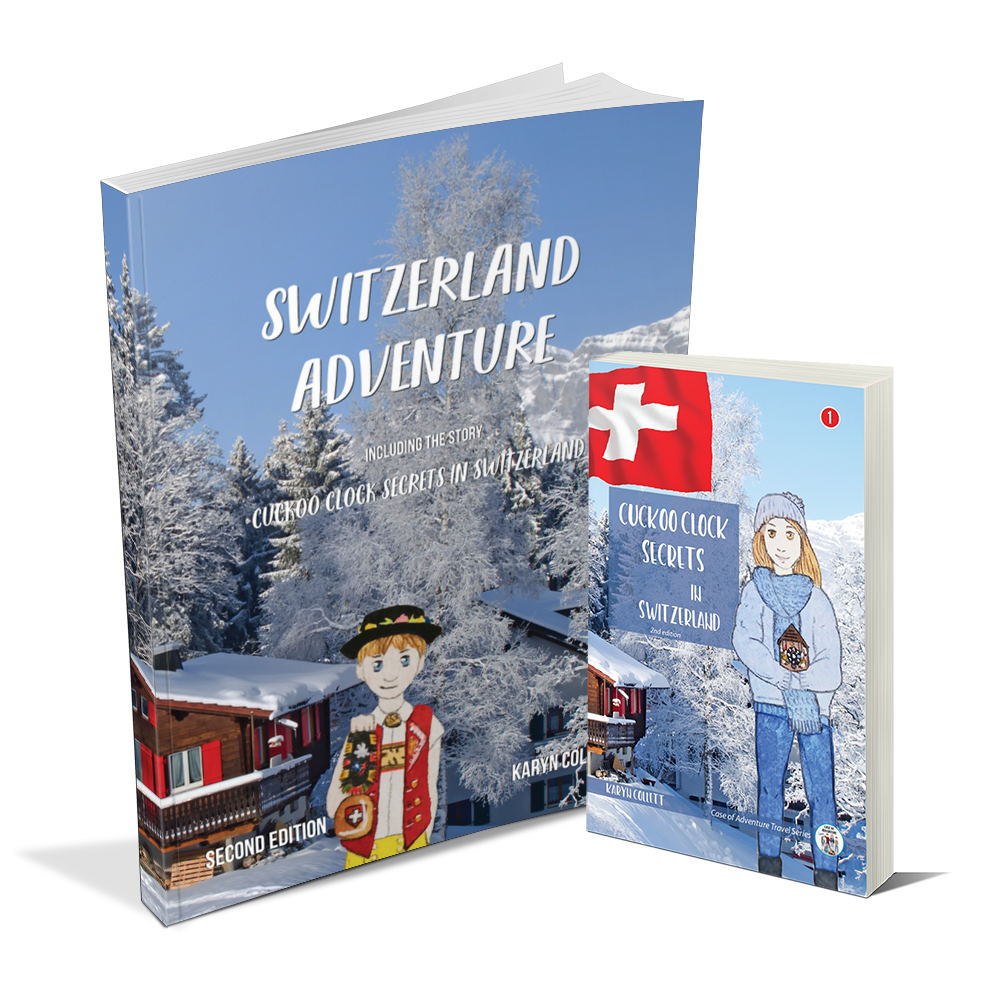


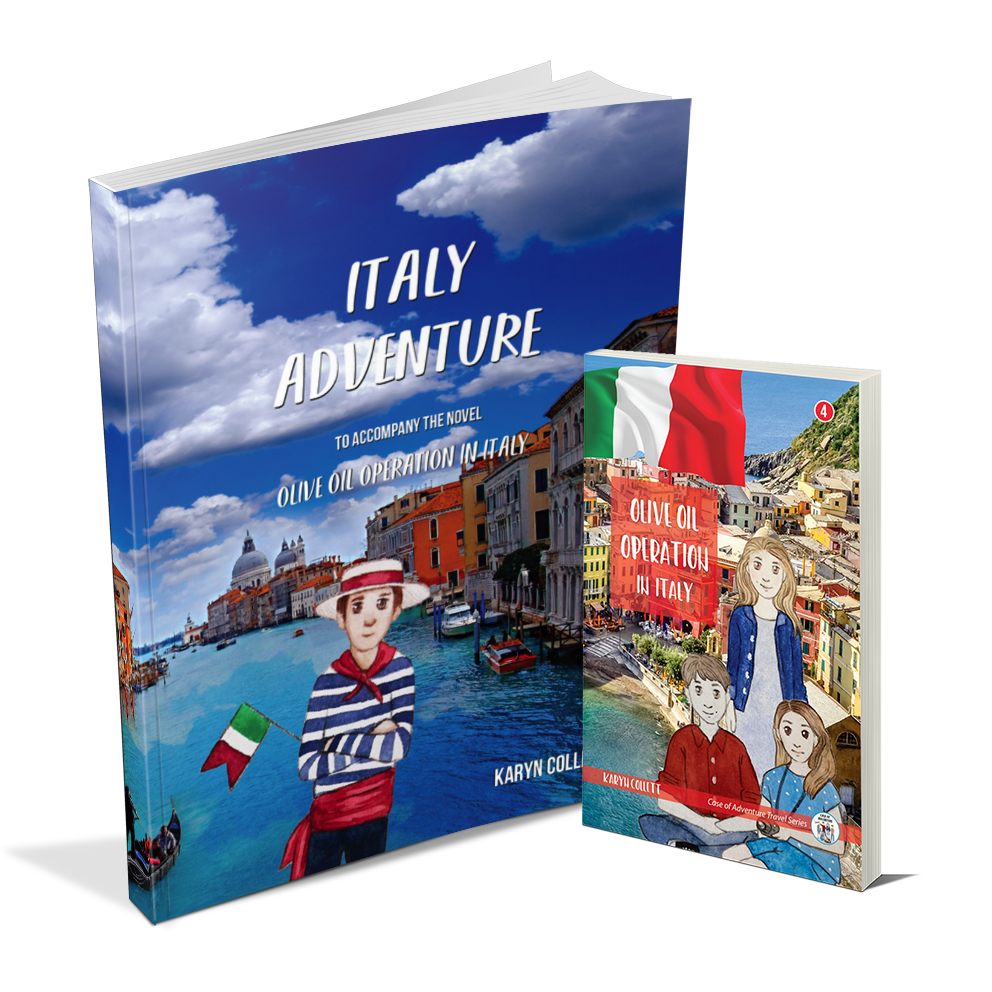
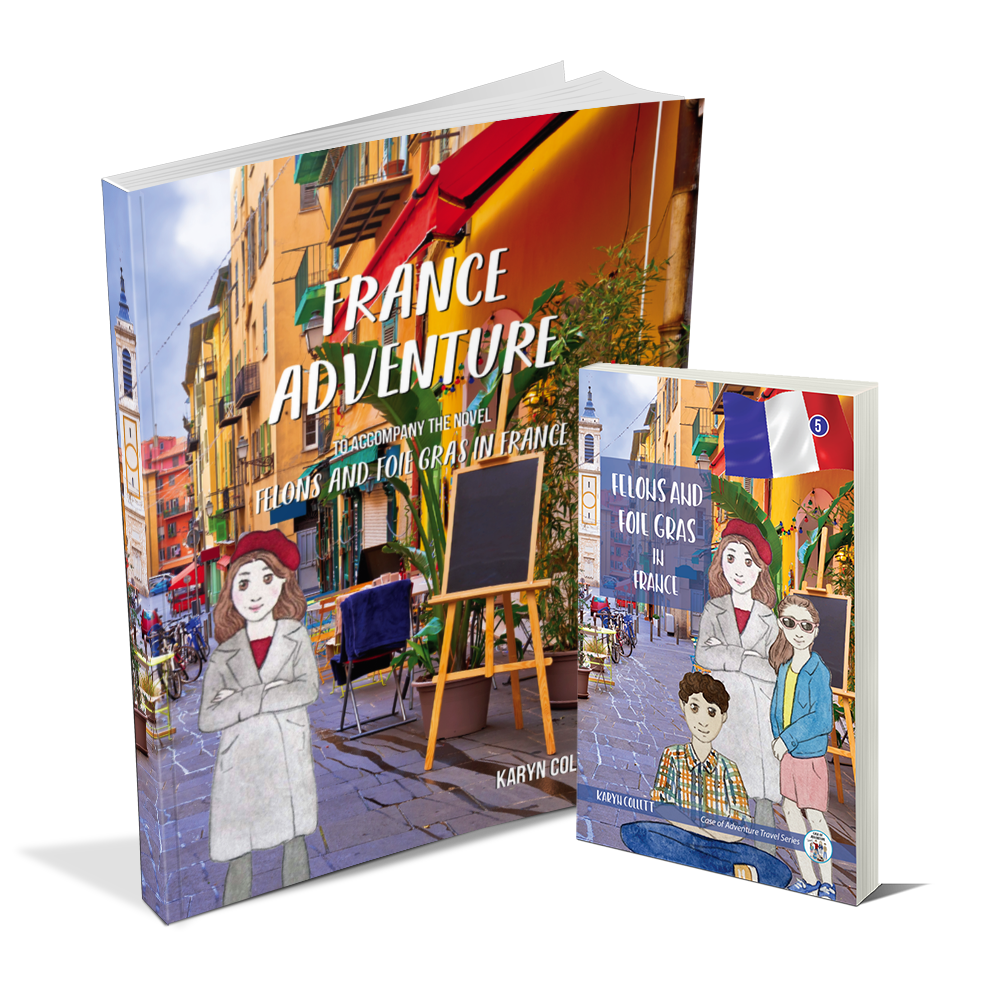
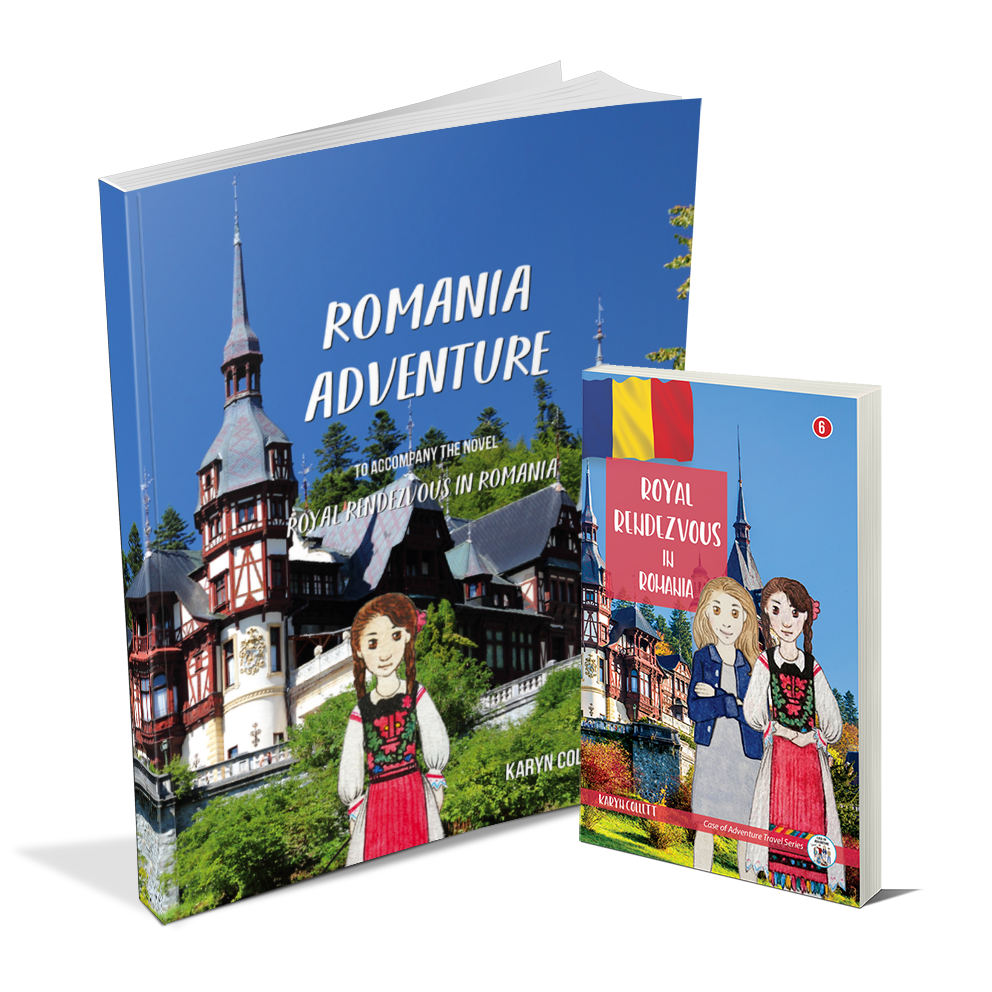

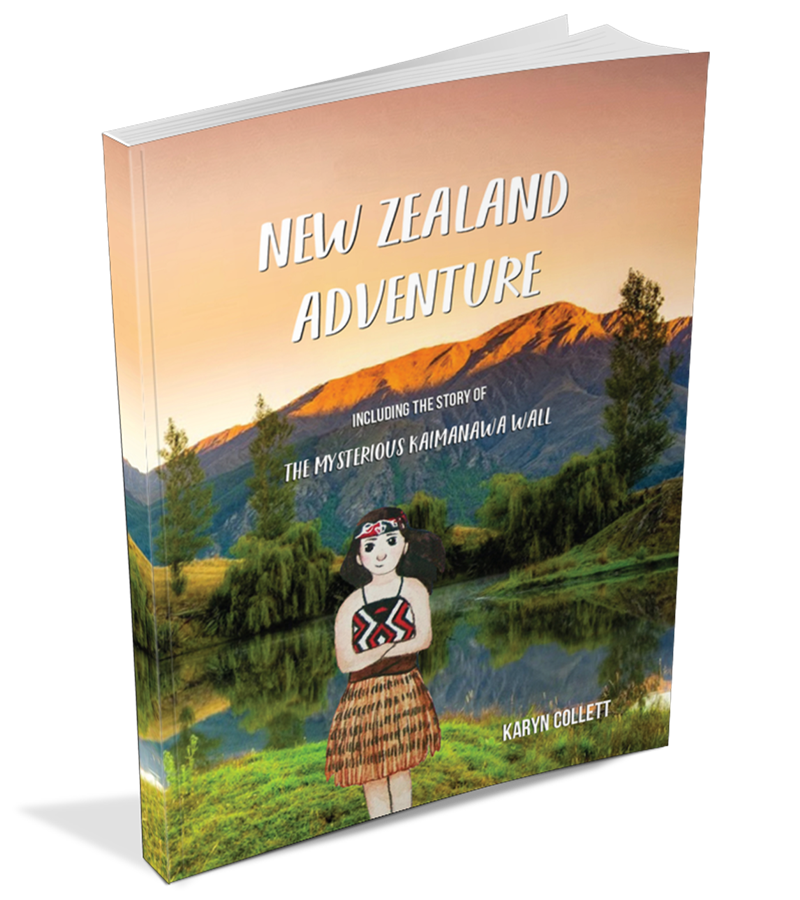

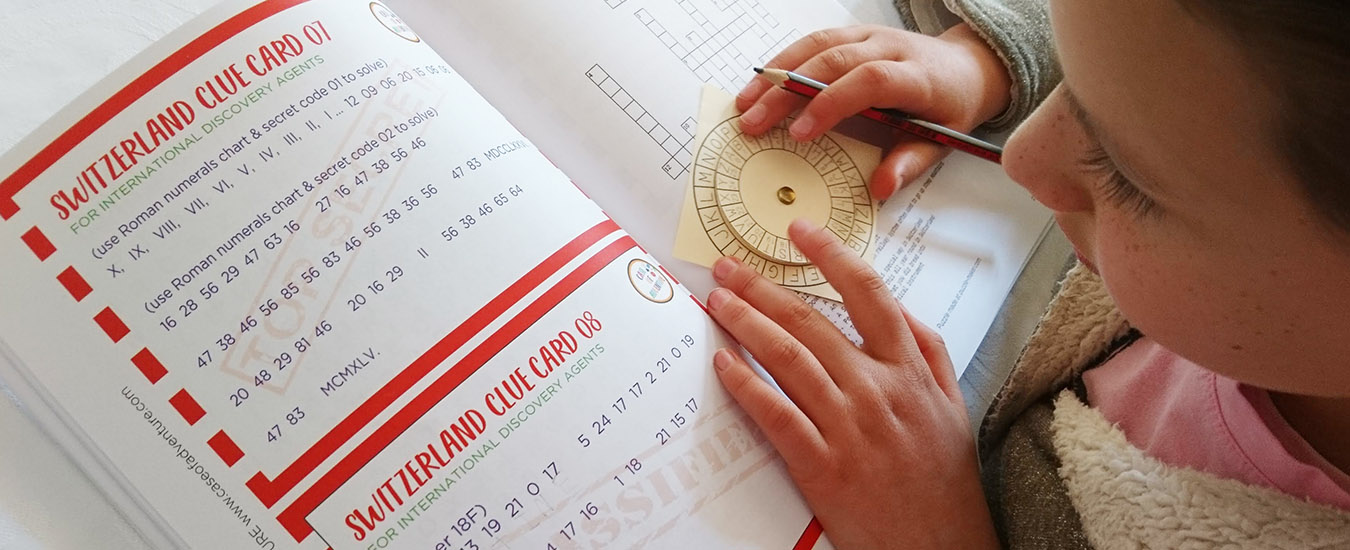

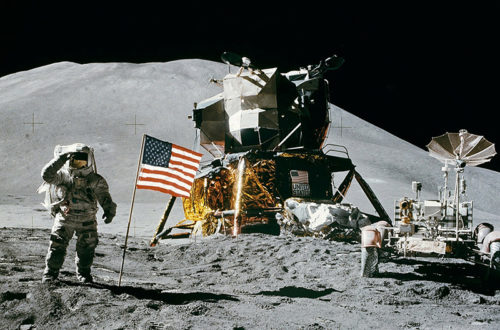

2 Comments
Julia
Awesome! I homeschool and my nephew wanted to learn about Madagascar. I had a hard time finding facts about Madagascar that wasn’t presented in a dry boring way and then I found this. It. Is. Awesome! Thank you for taking the time to create this great resource!
Karyn
Yay! Julia, I am so glad that it has been helpful to you. Yes, learning should be creative and interesting. Thanks so much for your comment! love, Karyn